Tteokgalbibonga Restaurant - Damyang Branch (떡갈비본가-담양)
15.9 Km 8246 2021-08-26
91, Jungang-ro, Damyang-eup, Damyang-gun, Jeollanam-do
+82-61-383-6692
Damyang, located in Jeollanam-do, is not only famous for its bamboo trees, but is also for its tteokgalbi, or grilled short rib patties.
Tteokgalbibonga, known for its signature tteokgalbi, has become quite famous in the area. With its exquisite resemblance to injeolmi (rice cakes coated with powdered soybeans) and the way it melts in your mouth, it’s no wonder Tteokgalbibonga attracts guests from as far as Japan.
Tteokgalbi gets its name from its resemblance to rice cakes, or tteok. In addition to its texture, its savory marinade brings out the meaty flavor of tteokgalbi.
Aside from their main dish, hanu (Korean beef) tteokgalbi, they also have dwaejigalbi, bulgogi, and galbi tang available, served with regular side dishes of a Korean set menu, even including a dessert. Tteokgalbibonga is often crowded with customers that you’ll likely have to wait in line if you visit for during the evening.
Gochangeupseong Walled Town (고창읍성)
15.9 Km 19994 2024-04-07
1, Moyangseong-ro, Gochang-gun, Jeonbuk-do
+82-63-560-8067
Gochangeupseong Walled Town was built in 1453 during th reign of Joseon King Danjong to protect the city from foreign invaders. The walls were built by the local civilians, using natural resources as they were available. Also called Moyangseong Fortress, the walled town served a vital role in protecting the southern region, and was designated Historic Site No. 145 on April 1, 1965. The walls are 4~6 meters high and 1,684 meters long, with three gates on the north, east, and west walls, each protected by curved walls. Inside the large area there were 22 government buildings. Restoration work on the wall has been ongoing since 1976.
Gochang Moyang Fortress Festival (고창모양성제)
15.9 Km 16308 2024-04-07
1, Moyangseong-ro, Gochang-gun, Jeonbuk-do
• 1330 Travel Hotline: +82-2-1330 (Korean, English, Japanese, Chinese) • For more info: +82-63-560-2949
Gochang Moyang Fortress Festival has been held since 1973 to inspire admiration for the ancestors who made great efforts in building the fortress, develop local culture, and encourage love and pride for Gochang residents. Main events include a celebration and memorial ceremony, with additional events ranging from a pansori performance and farming music to folk games and archery. Many people participate in the Dapseongdori event, where participants carry a rock on top of their heads and walk around the fortress three times. Doing this is said to cure all illnesses, grant a long and healthy life, and allow one into heaven.
Sin Jae-hyo's House (고창 신재효 고택)
16.0 Km 16260 2024-04-07
100, Dongni-ro, Gochang-gun, Jeonbuk-do
+82-63-560-2943
Sin Jae-hyo (1812-1884) was a legendary theorist, director, and sponsor of pansori (epic chant). Sin Jae-hyo's House in Gochang was built in 1850, and visitors can observe sarangchae (main room), an old well, and a paulownia tree preserved to this day. Sin was not a singer himself but a pansori enthusiast, and he used wealth to train potential singers and contribute to the growth of pansori. He also compiled and edited six pansori madangs (operas) titled Ttoggi Taryeong, Bak Taryeong, Simcheongga, Jeokbyeokga, Chunhyangga, and Garujigi Taryeong, of which only five are passed down. To honor his contributions and passion for pansori, Dongni Gugakdang was founded behind this house.
Gochang Pansori Museum (고창판소리박물관)
16.0 Km 10730 2024-04-06
100, Dongni-ro, Gochang-gun, Jeonbuk-do
+82-63-560-8061
The Gochang Pansori Museum was established in the old residence of ‘Dongni’ Sin Jae-Hyo (a musical theorist and arranger and a sponsor of Pansori) with the aim of honoring the great Pansori singers of the past (including Sin Jae-Hyo) and preserving and developing the indigenous tradition of Pansori. Of the original rooms of the residence only Sarangchae (an annex where men used to study or welcome guests) has been renovated and is open to the public. Right next to Sarangchae is the Dongni Gugakdang (Korean Traditional Music Hall).
Over 1,000 pieces related to Pansori and great local singers are on display at the museum, included personal possessions once owned by Sin Jae-Hyo (penname ‘Dongni’). For those interested in learning more about the traditional art of Pansori music or experiencing high-quality Pansori, the Gochang Pansori Museum is a must-visit travel destination.
Sunchang Gangcheonsa Temple (강천사 (순창))
16.0 Km 36768 2024-04-07
270, Gangcheonsan-gil, Sunchang-gun, Jeonbuk-do
+82-63-652-5420
Located approximately 1.8 kilometers from the entrance of Gangcheonsan County Park, Gangcheonsa Temple was built by Monk Doseon during the first year of Queen Jinseong of Silla (AD 887). In the third year of King Chungsuk of Goryeo (1316), the temple saw the addition of a five-story stone pagoda, built by Monk Deokhyeon. At its peak, the temple was said to have had 12 hermitages and housed 1,000 monks. It was burned down during the Imjin War (1592-1598), leaving only the pagoda, but was rebuilt a few years later by Monk Soyo during the 37th year of King Seonjo (1604). Unfortunately, the temple was burned down again in the Korean War, but was once again restored to its original state in 1959.
Cultural assets found at the temple include Stone Guardian Post of Chungsin-ri & Namgye-ri, Sunchang Guesthouse, and the Three-story Stone Pagoda of Sunhwa-ri. Nearby tourist attractions include Geumseongsanseong Fortress, Yongsopokpo Falls, Gangcheonho Lake, Damyangho Lake, Chuwolsan Mountain, Huimunsan Mountain, and Naejangsan National Park.
Bujji (부찌)
16.5 Km 62 2024-04-07
15, Seongsan 2-gil, Gochang-gun, Jeonbuk-do
+82-63-563-3626
This is a place where you can taste duck meat and the representative dish budaejjigae (spicy sausage stew). This Korean dishes restaurant is located in Gochang-gun, Jeollabuk-do. The most famous menu is sausage stew.
Damyang Passenger Bus Terminal (담양공용버스터미널)
16.5 Km 6391 2016-11-18
24-1, Jungang-ro, Damyang-gun, Jeollanam-do
Damyang Bus Terminal is an express bus and intercity bus terminal, located in Damyang-gun, Jeollanam-do.
Korea Bamboo Museum (한국대나무박물관)
16.7 Km 25180 2021-07-19
35, Jukhyangmunhwa-ro, Damyang-gun, Jeollanam-do
+82-61-380-2901
The Korean Bamboo Museum is a comprehensive complex that preserves, exhibits, produces, and allows people to experience bamboo products. First opened in 1981 at Damju-ri, the museum was expanded and relocated to the current location in March 1998. Not only does the museum provide bamboo-related exhibitions, it also provides techniques on making bamboo products as well as holds the Bamboo Festival every May.
House by the Museum (박물관앞집)
16.8 Km 41454 2021-10-20
22, Jukhyangmunhwa-ro, Damyang-gun, Jeollanam-do
+82-61-381-1990
Located on the opposite side of Korea Bamboo Museum, House by the Museum is a uniquely
named restaurant. The main menu includes tteokgalbi (grilled short rib meat patties) which is comprised of minced lean meat, green onion, onion,
bulgogi sauce and sesame oil, which makes the taste tender. As for the nutrition, it has a lot of essential fatty acid from sesame oil that
complements with the beef.
Another signature dish of the restaurant is Daetongbap - rice cooked in a bamboo, made with rice, millet, bean, sorghum, jujube, nuts and others. It features a healthy food with its delicate fragrance. In addition, more than 10 side dishes along with Daetongbap such as Tohajeot (salt-fermented toha shrimp), juksun deulkkae muchim (seasoned vegetables with perilla seeds and bamboo shoot), gejang muchim (marinated crab), beoseot-bokkeum (fried mushroom), mul kimchi, dwaejigogi gochujang bokkeum (stir-fried spicy pork), sangchu ssam (wrapped in lettuce), and others. After a meal, bamboo blade tea of a clean taste is offered as a dessert.
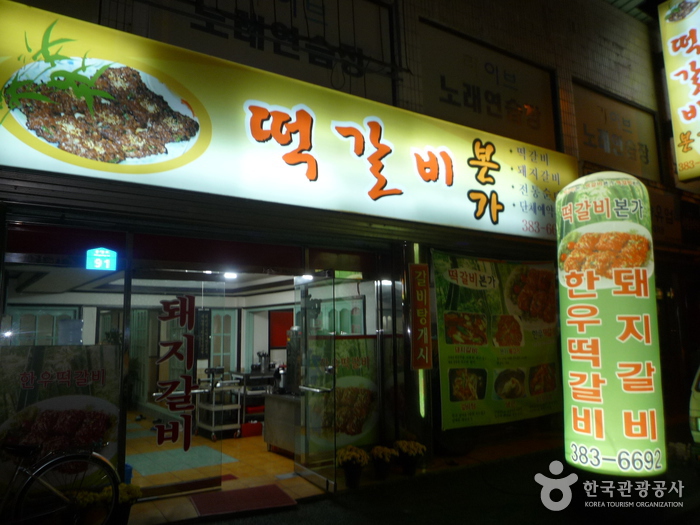
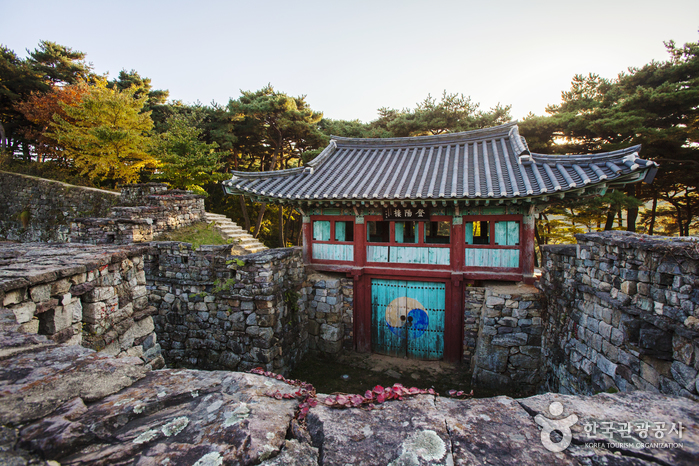

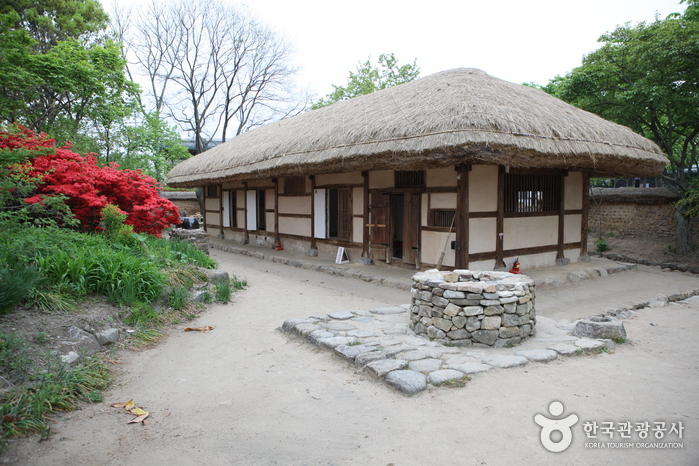
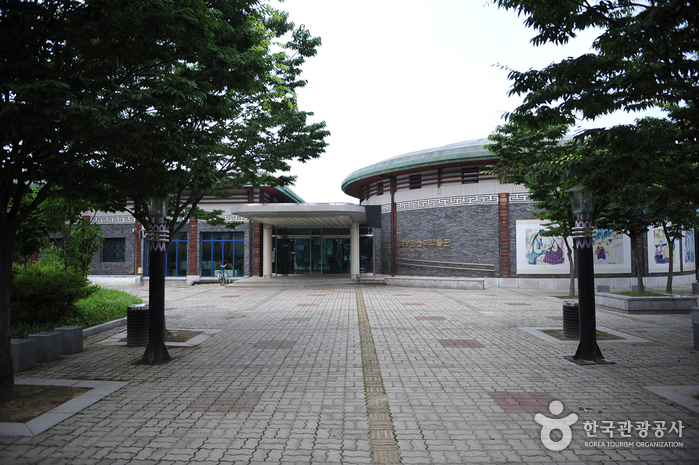
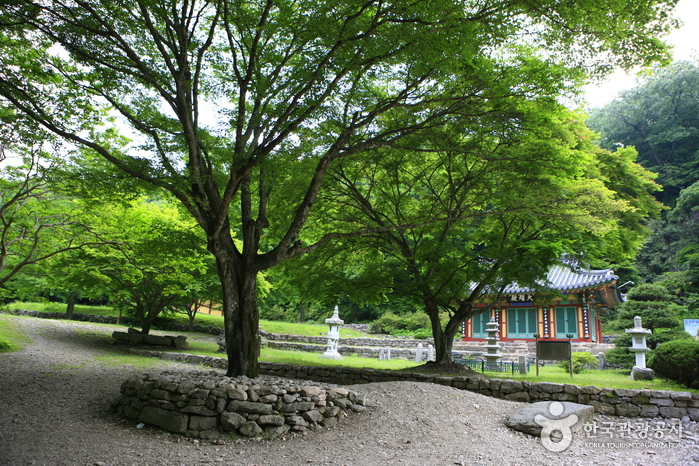
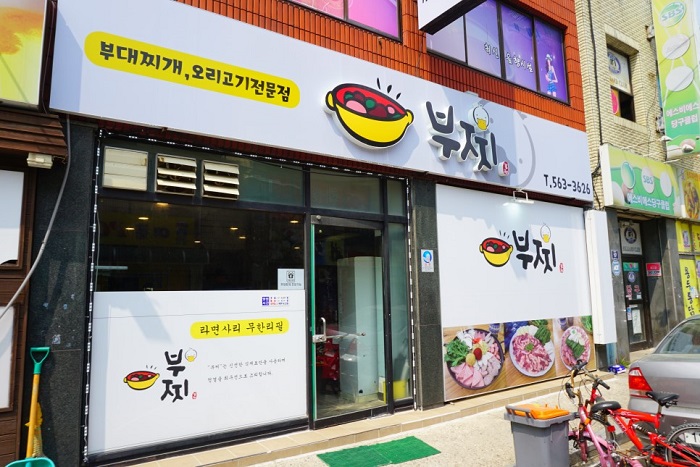
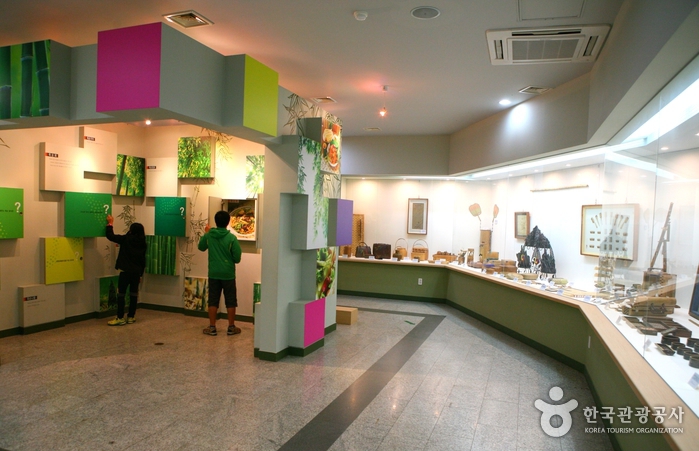
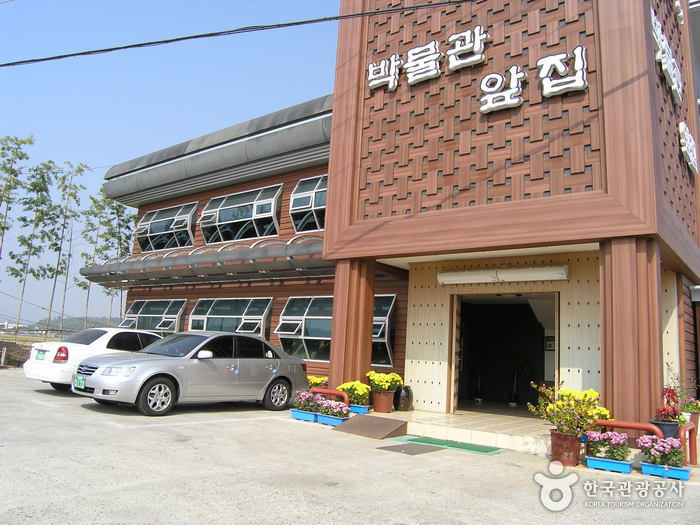
 English
English
 한국어
한국어 日本語
日本語 中文(简体)
中文(简体) Deutsch
Deutsch Français
Français Español
Español Русский
Русский